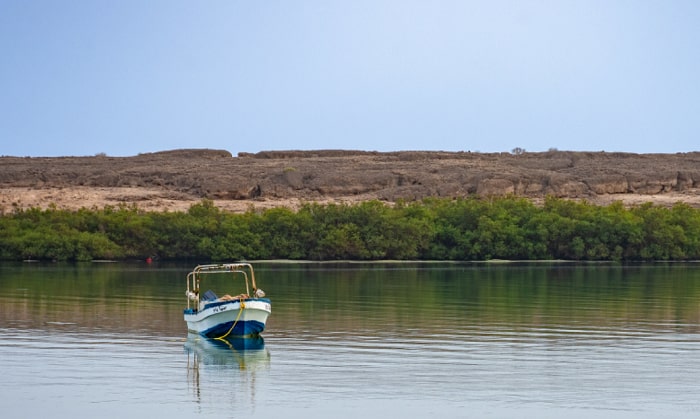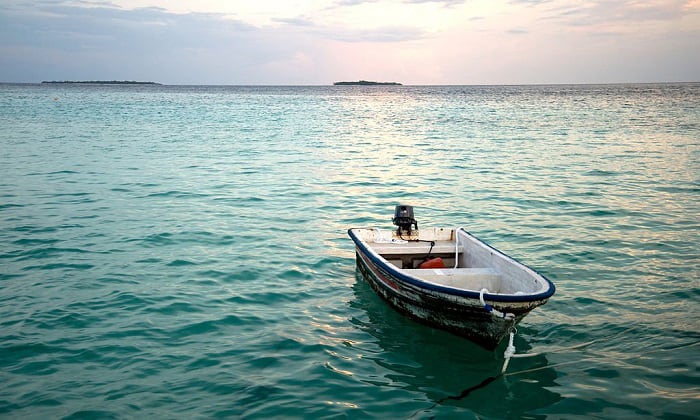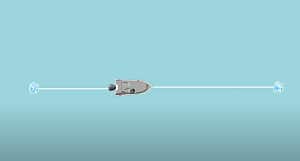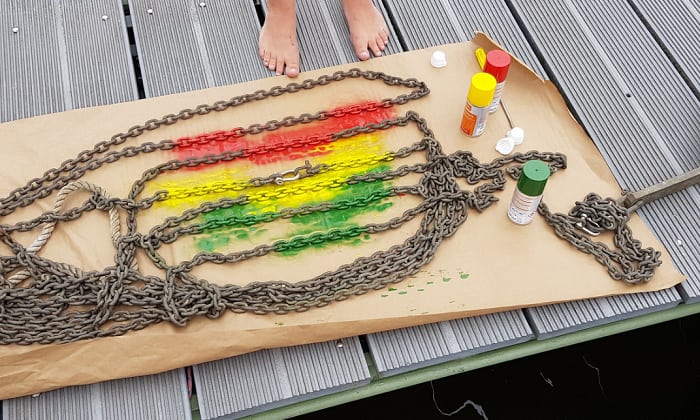How To Set Anchor On Boat

Anchoring is an important part of canoeing that is used in a variety of situations. All the same, the process may differ depending on the needs of each situation. Not being able to properly adapt our anchoring can lead to bug.
In this commodity, we'll go over the proper procedure for setting the ballast and how to anchor a boat in a lake. We'll likewise include essential information about choosing the right tools.
Go on reading to learn more.
Table of Contents
- What You Need
- Anchor Use
- Setting An Anchor
- 1. Ease the boat into position
- 2. Driblet the anchor
- iii. Back the boat with the current
- 4. Check that the gunkhole is stable
- Double Anchoring
- How To Double Anchor To Stop Boat Swinging At Anchor
- Step 1: Fix anchor normally
- Step two: Back the boat and extend the line
- Step iii: Drop the second anchor from the stern
- Step 4: Position the gunkhole between both anchors
- Additional Details And Anchor Tips
- one. Choosing an anchor
- 2. Choosing ballast rode
- Determination
What Y'all Need
- Anchor
- Rode
- Cleats (for tying the line)
- Windlass (optional)
- Motion detection electronics such as GPS (optional)
Anchor Utilise
Using an anchor is important in many situations. From keeping the boat secure during turbulent weather to stationing it for reanimation on the water, anchoring is an important aspect of boating that enables us to expand our boating repertoire.
Even so, proper technique for anchoring is very important because improper methods tin can cause issues that can potentially put us and the gunkhole in danger. The anchor must be stable to anchor a boat overnight.
Setting An Anchor

To use an anchor, our equipment should exist gear up for utilise before setting out. E'er bank check that the ballast, the rode, your cleats, and even mechanisms for using the anchor are in proper working status.
You don't demand to have special equipment to apply an anchor, but when y'all anchor a boat with a windlass and use boating electronics, the process can be easier.
1. Ease the boat into position
Determining the proper anchor spot is the important start step. Information technology's best to research the waters you'll exist sailing in, including the type of water bed for choosing your ballast.
Make use of electronics if you accept them to make up one's mind a suitable anchoring spot and ensure that the boat's bow is facing against the current.
Arroyo the anchoring spot slowly and command your engine output appropriately. Bring the gunkhole to a stop and ready the anchor for deployment.
two. Drop the anchor
Drop the anchor and cheque that it is deeply connected to the boat. Ease the line into the h2o, but don't drop the entire length correct away. Information technology is recommended to thread the line past hand; this will also ensure that the line does not tangle upwards.
iii. Dorsum the boat with the electric current
If the current is strong, the boat will migrate along with it and y'all should allow the line to extend and tighten. You can also help the boat along past running the engine at a depression output in reverse. Notwithstanding, be careful and ensure that there is not too much momentum.
Once the line has extended and tightened, secure it properly.
4. Cheque that the gunkhole is stable
At present you need to ensure that the gunkhole is stable and is not dragging. This ways that the boat is properly held in place by the anchor. If you accept a motion sensor, it becomes easier to determine any motility of the boat.
If the boat is securely held in place, you're done. But if it is dragging, you'll need to set the ballast again.
Double Anchoring
When you anchor a gunkhole for fishing in a lake, standard anchoring may non be sufficient, particularly when there are stiff winds. This is where a setup with ii anchors is useful.
How To Double Anchor To Terminate Boat Swinging At Ballast
Step 1: Gear up anchor normally
The process for setting the kickoff anchor is the same. The deviation ordinarily comes afterward deploying the first anchor.
Step 2: Back the boat and extend the line
Later setting the first anchor in a lake, yous volition need to use propulsion to back the boat. As with setting the anchor normally, go along your engine output depression and slowly dorsum the gunkhole. Continue backing until reaching the spot for deploying the 2nd ballast.
Step 3: Driblet the second ballast from the stern
In one case you lot achieve the spot for the second anchor, deploy the second anchor. Ease the line into the h2o every bit you did with the first anchor.
Footstep iv: Position the boat between both anchors

Become back to the first anchor'due south line and pull it to move the boat into position. The proper place for the gunkhole is the midpoint between the ii anchors. Once you achieve the proper identify, pull the line on the boat until the line tightens and necktie it to the gunkhole.
Exercise the same for the anchor line at the stern. Remember to properly check for drag and stability.
Additional Details And Anchor Tips

Aside from knowing the steps for anchoring a boat in a lake, choosing the right boat anchor setup is besides important.
Below are some additional details to keep in mind.
1. Choosing an anchor
There are many different types of anchors with different shapes and sizes. Each type is used for different kinds of situations. Below are some of the common types of anchors and a breakdown of the situation where they are best suited.
For anchoring in a lake, choose anchors more suited for soft ground.
- Lightweight
This type of anchor is used mainly for small boats due to its weight. It is designed to forestall bottleneck when used on grounds that are muddied or grassy.
- Navy
This is the traditional ballast that is popularly depicted in different media. Information technology is best used for a harder basis but non practiced in loose mud or sand where information technology is not able to dig in properly.
- Plow
This type of anchor is a popular choice due to having a good hold on a wide variety of basis types. Still, it needs to exist pulled to set. It is not a good option for soft ground or mud.
- Claw
A lighter alternative to the plow, this type of anchor works similarly and on the same types of surfaces. The difference is that this sets in more hands at the expense of property power.
- Mushroom
Named because of its appearance, this blazon of anchor works all-time on soft basis.
2. Choosing ballast rode
The name for the anchor's line is rode. In that location are different types of anchor rode with variations in size and material. The rode nosotros need changes depending on our preferences and needs, but the boat as well factors into this choice.
The rode's thickness should be an eighth of an inch per 9 feet of the boat's length. This means that a 20-pes boat should have an ballast line that is effectually a 3rd of an inch thick.
For the length, at that place should exist 8 anxiety of line for every foot of water depth. That means an anchoring depth of 20 feet would need 160 feet of rode.
Determination
Now y'all know how to properly ballast a boat, along with other important considerations to arrange to dissimilar situations. Yous're now also familiar with double anchoring and when to use it. Just be sure to always mind local boat anchoring rules.
If you know anyone else asking how to anchor a boat in a lake, delight share this article with them as well. Drop your comments and suggestions below, we'd love to hear from you lot.
Remember to gunkhole safely.

"My intention from the first mean solar day establishing Boating Basics Online is to provide as much assist every bit possible for boaters who want to experience a first safe and convenient trip. And then experience complimentary to join usa and share your beautiful journeys to the sea!"
Source: https://www.boatingbasicsonline.com/how-to-anchor-a-boat-in-a-lake/

0 Response to "How To Set Anchor On Boat"
Post a Comment